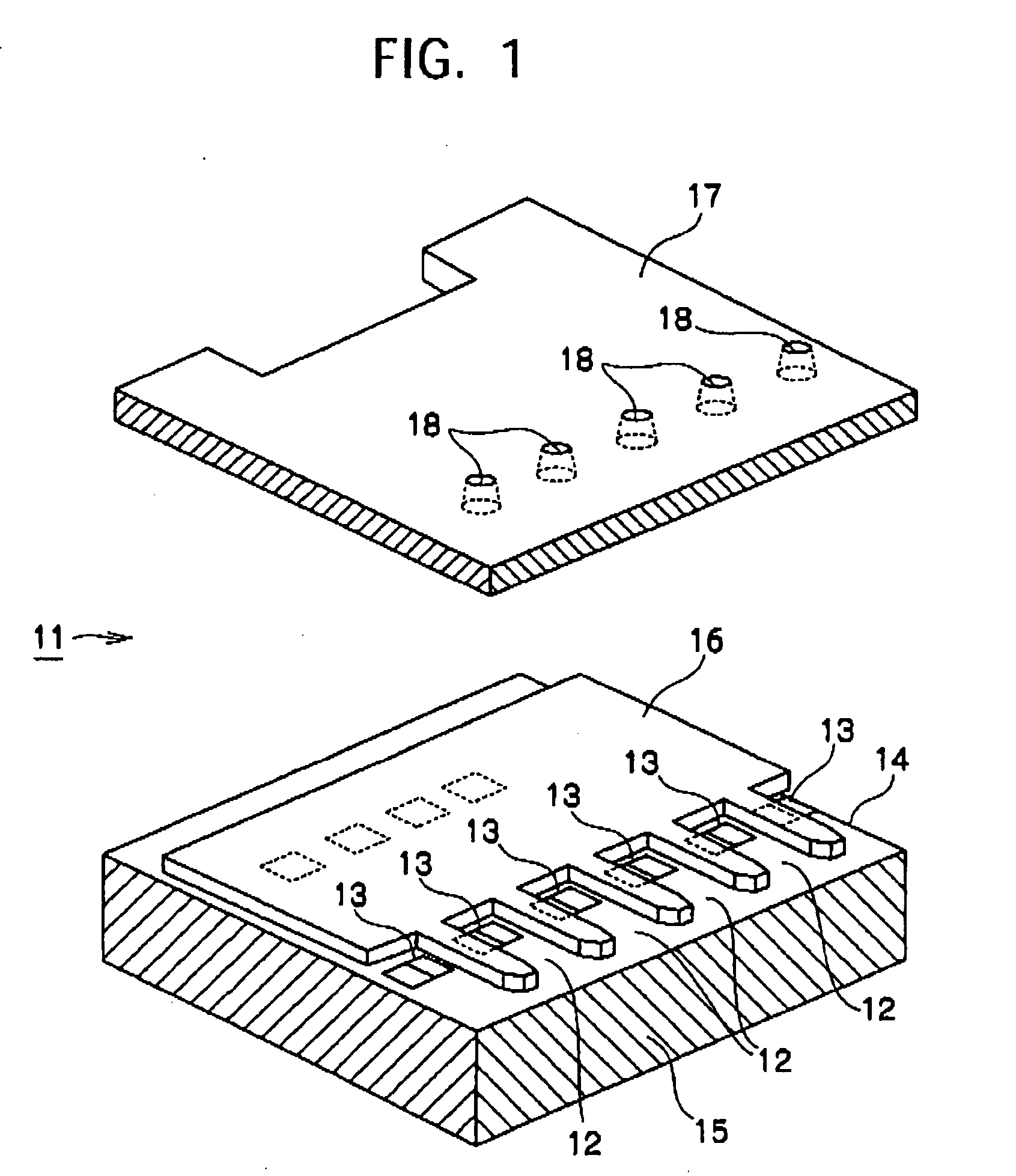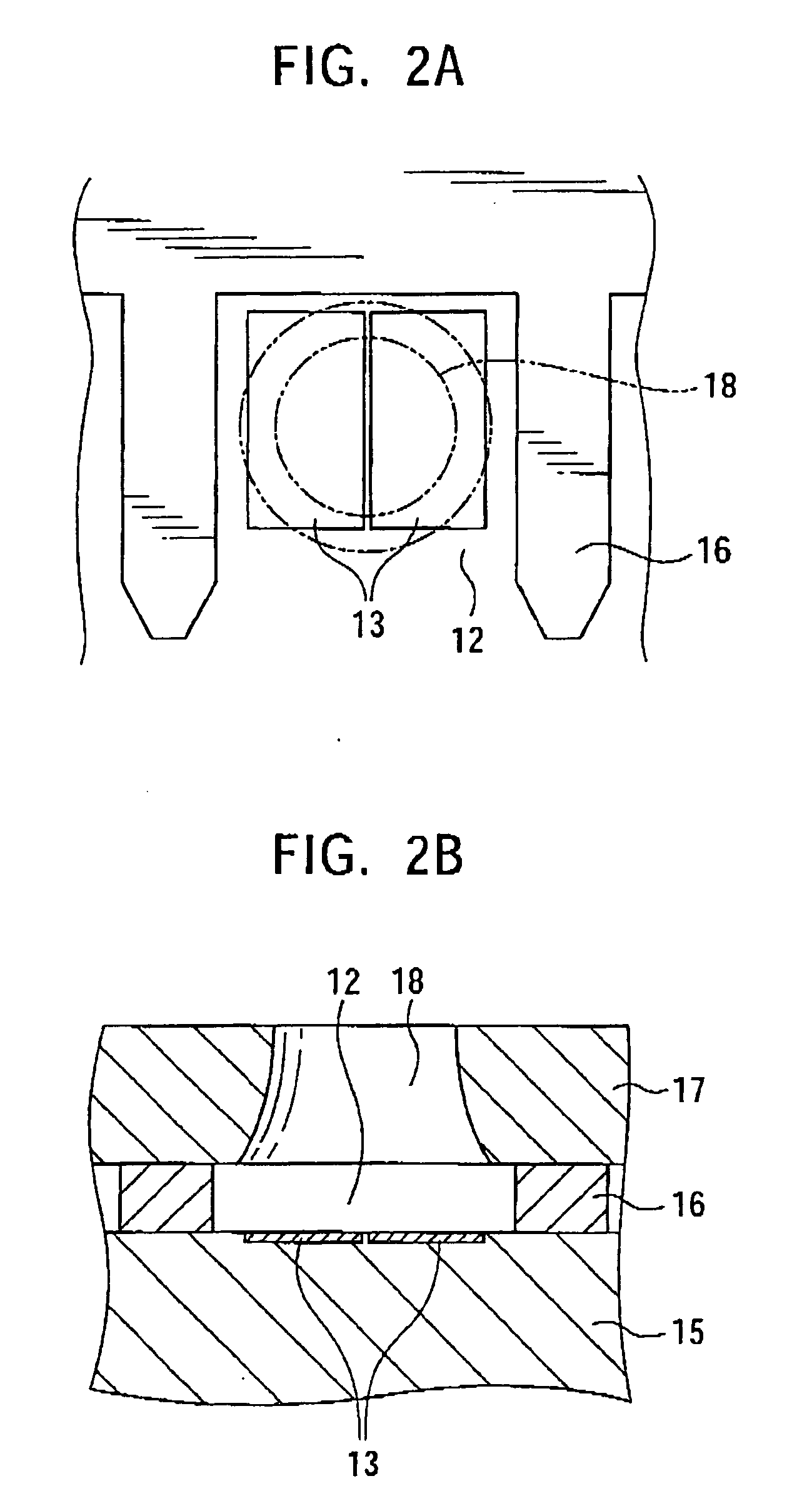Liquid ejecting device and liquid ejecting method
a liquid ejecting device and liquid ejecting technology, which is applied in printing, inking apparatus, other printing apparatus, etc., can solve the problems of deteriorating printing quality, inability to eject ink perpendicular to the ejecting surface, and position shifting between, so as to achieve the effect of increasing the quality of printed images
- Summary
- Abstract
- Description
- Claims
- Application Information
AI Technical Summary
Benefits of technology
Problems solved by technology
Method used
Image
Examples
Embodiment Construction
[0081] An embodiment of the present invention is described below with reference to the accompanying drawings.
[0082]FIG. 1 is an exploded perspective view showing a printer-head chip 11 to which a liquid ejecting device of the present invention is applied. In FIG. 1, a nozzle sheet 17 is bonded to a barrier layer 16. The nozzle sheet 17 is shown, with it separated.
[0083] The printer-head chip 11 is of a type using the above thermal method. In the printer-head chip 11, a base member 14 includes a semiconductor substrate composed of silicon, etc., and heating resistors 13 (which correspond to bubble producing units or heating elements in the present invention, and which are used to produce bubbles in a liquid when being supplied with energy) formed on one surface of the semiconductor substrate 15. The heating resistors 13 are electrically connected to an external circuit by a conductor portion (not shown) formed on the semiconductor substrate 15.
[0084] The barrier layer 16 is made o...
PUM
 Login to View More
Login to View More Abstract
Description
Claims
Application Information
 Login to View More
Login to View More - R&D
- Intellectual Property
- Life Sciences
- Materials
- Tech Scout
- Unparalleled Data Quality
- Higher Quality Content
- 60% Fewer Hallucinations
Browse by: Latest US Patents, China's latest patents, Technical Efficacy Thesaurus, Application Domain, Technology Topic, Popular Technical Reports.
© 2025 PatSnap. All rights reserved.Legal|Privacy policy|Modern Slavery Act Transparency Statement|Sitemap|About US| Contact US: help@patsnap.com



